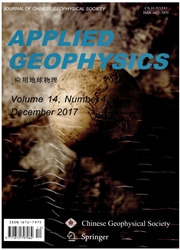

 中文摘要:
中文摘要:
根据杰克起来理论,联系地震的原因到外部核心传送对流上升身体,外壳将逐渐地在地震以后恢复。在如此的情况中,外壳被拉长,地下的温度被减少,降水减少,并且干旱发生。在这份报纸,降水与地面温度和地震数据相比决定在地震和随后的干旱之间的空间、时间的关系。我们的目的是开发干旱预言的一个新方法。与在地点的一些例外,第一干旱的分析出现自从 1950 ,在大陆中国和邻近的区域发生在女士 7 地震以后干旱趋于在地震以后在六个月以内在一样的纬度在地震震中附近并且在震中的东方区域发生在区域。另外,并且地震和干旱的开始的时间之间的差别将近分享 0 ~ 6 个月的一样的概率。在从 1980 ~ 2011 发生在西方的中国的 34 女士 6.5 地震的小心的分析以后,我们决定第二干旱趋于发生跟随第一干旱的约六个月,显示一个 quasi-half-year 时期。而且, quasi-half-year 变化的持续时间与地震的大小增加,在为女士 6.5 的约 2.5 年为女士 8 地震的地震和约 5 年
 英文摘要:
英文摘要:
According to the "jacking-up" theory, which relates the cause of earthquakes to outer core convection ascension bodies, the crust will gradually recover after an earthquake. In such cases, the crust is stretched, the underground temperature is reduced, precipitation decreases, and drought occurs. In this paper, precipitation is compared with ground temperature and seismic data to determine the spatial and temporal relationship between earthquakes and subsequent droughts. Our objective is to develop a new method of drought prediction. With a few exceptions in location, the analysis of the first drought to occur after the Ms 〉 7 earthquakes in mainland China and the adjacent areas since 1950 shows that droughts tended to occur in regions near earthquake epicenters and in the eastern regions of the epicenters at the same latitude within six months after the earthquakes. In addition, and the differences between the starting time of the earthquakes and the droughts nearly share the same probability of 0 to 6 months. After careful analysis of 34 Ms 〉 6.5 earthquakes occurring in western China from 1980 to 2011, we determined that a second drought tends to occur approximately six months following the first drought, indicating a quasi-half-year period. Moreover, the duration of the quasi-half-year fluctuation increases with the magnitude of earthquake, at approximately 2.5 years for Ms 6.5 earthquake and approximately 5 years for Ms 8 earthquake.
 同期刊论文项目
同期刊论文项目
 同项目期刊论文
同项目期刊论文
 期刊信息
期刊信息
